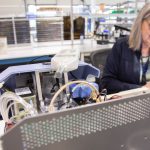A Look at the Medical Device Approval Process
There is a lot more that goes into manufacturing medical devices than simply designing or prototyping. The entire process to bring a new medical device to market can take anywhere between 3 – 7 years. While most of that time includes discovery, iterations, prototyping and testing, undergoing the medical device approval process can take up to nearly a year.
To better understand how to get a medical device approved, it is important to identify the three main classes of medical devices. Almost every device falls under one of these categories and paves the path to federal approval in the United States.
Class I
Class I medical devices are considered low-risk to patients. They require minimal regulation and include items such as tongue depressors, band-aids and non-electric wheelchairs.
Class II
These are medium-risk devices for patients. The FDA considers contact lenses, syringes and pregnancy tests as Class II.
Class III
Class III parts are more complex, higher-risk and invasive to patients. Examples include implants and prosthetic components.
Once you know your project’s classification, you can start the medical device approval process and be on your way to getting your invention to the market.
Self-Registration
Self-registration is one of the simpler FDA approval processes. Generally, those with class I instruments are able to register with the FDA going this route. Self-registration consists of three steps to get a medical device approved:
- Pay the registration fee.
- Submit the listing and registration information with the FDA.
- Receive an email confirmation and approval from the FDA.
Because Class I devices are considered low-risk, they typically do not need to undergo any further approval. The self-registration process is the fastest of the three, and will only take a few weeks from start to finish.
510(k) Process
For Class II, the FDA needs to ensure medium-risk patient devices and instruments are safe and effective. The 510(k) process is designed to ensure anything going to market achieves a set of safety standards and regulations for patients and end-users.
During this process, the FDA requires the developer to prove what is called substantial equivalence. This is a whole process in itself, where, according to the FDA, the entrepreneur must prove their device has the “same intended use and same technological characteristics as a legally marketed device.”
The majority of new devices and instruments that go through the FDA approval process are considered Class II. Because of this, the process takes longer — around six months to be specific. Prepare with plenty of time to undergo this medical device approval process to ensure you can get to market within your desired timeline.
Pre-Market Approval
Finally, one of the more involved ways to get a medical device approved is through the pre-market approval process. This is often reserved for Class III devices to test the safety and efficacy through scientific evidence and trials. The FDA points out that it is critical to ensure that the “possible benefits to health from the intended use of a device outweigh the possible risks.”
Pre-market approval is a refined process to determine that the device in question will significantly help a large portion of the target population. Even so, surprisingly, this process only takes an average of eight months. Keep in mind that complex medical devices may take longer. This medical device approval process often demands proven scientific evidence and often clinical trials to prove its safety and efficacy.
Hit the Market With Your Ideas
Each class of medical devices requires a different FDA approval process, with each taking anywhere between a few weeks to several months. If you are looking for how to get a medical device approved, plan for it to take up to a year, often with various documents and sometimes scientific studies backing you up. Once you identify what class your project will fall into, getting your device approved is only a matter of time.
The team at Nextern has collaborated with partners to develop new ideas and bring innovative medical devices to the market. We have established industry-leading practices in facilities in Minnesota, Vietnam and Costa Rica to assist with your project development at all stages, including through the medical device approval process.
If you are preparing to start a new project or are ready to get your device to the market, we can help. Contact the engineering team at Nextern and find new ways to innovate.







